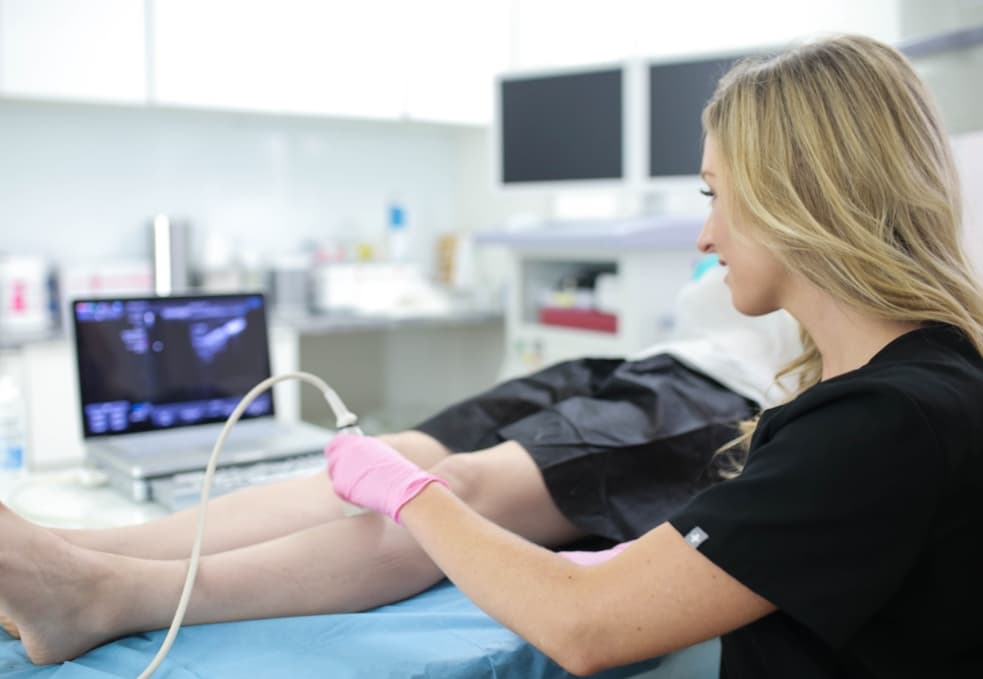Are varicose veins covered by insurance?
If you have varicose veins and spider veins, you might have concerns about the cost of vein treatment. There’s a common misconception that most health insurance plans don’t cover varicose vein treatments because they’re not deemed medically necessary. But that’s simply not true. Most varicose vein treatments are covered by most insurance companies, especially if you meet certain requirements. The specific details of your insurance coverage will depend on your unique insurance plan, but the following are a few situations in which your varicose vein treatments might be covered by health insurance plans.
You have symptoms that negatively affect your daily life and work
Varicose veins are dense, ugly, bulging leg veins that look like a dense mass of twisted, tangled, and knotted ropes. They bulge out of the skin’s surface and look like a mass of tree trunks. However, poor cosmetic appearance isn’t enough for insurance coverage. Your varicose vein treatment might be covered by insurance plans if you have symptoms that negatively affect your daily life and work. You might be eligible for insurance coverage if you experience leg heaviness, leg pain, leg swelling, restless leg syndrome, frequent leg cramps, and other symptoms that prevent you from carrying out your daily activities.
You have underlying chronic venous insufficiency
Chronic venous insufficiency is the root cause of most vein problems, including spider veins and varicose veins. Venous insufficiency is a medical condition wherein your vein valves collapse or malfunction, and your blood flows backward to accumulate in the leg veins. The continued accumulation of blood in leg veins leads to spider veins, varicose veins, and other vein problems. Venous insufficiency is a dangerous medical condition with numerous potential medical complications. If you have the results of a venous ultrasound scan revealing chronic venous insufficiency, you may receive insurance coverage.
You have a high risk of vascular complications
Most health insurance plans cover varicose vein treatments if they’re necessary to prevent future complications. Your vein doctor might determine that you have a risk of vascular complications because of underlying vein disease, increasing your viability for insurance coverage. If you have chronic venous insufficiency, you have a high risk of vein complications in the future. Untreated vein disease can lead to skin discoloration, leg swelling, non-healing leg wounds (leg ulcers), and blood clots in leg veins (deep vein thrombosis). If you risk these vein problems, you have a strong chance of insurance coverage.
You have been wearing compression stockings for a while
Most health insurance plans stipulate certain conditions for insurance coverage. Each insurance plan has a unique set of requirements for you to access insurance coverage. But one of the common stipulations is that you should have treated conservative treatments and compression stockings for a few weeks before the varicose vein treatment. Compression stockings are skin-tight garments that push accumulated blood from your leg veins to the heart, thus alleviating the symptoms of vein disease. If your health insurance plan stipulates that you need to try compression stockings first, you’ll have to do that for a certain period before undergoing vein treatment.
Are spider vein treatments deemed medically necessary?
Spider veins are dense clusters of blood vessels that appear on the skin’s surface, just underneath the epidermis. They’re damaged blood vessels with excess blood accumulation of broken capillaries that leak on the skin’s surface. Spider veins are often caused by chronic venous insufficiency, but they can also be asymptomatic. Your spider vein treatment might be deemed medically necessary if you have the signs or symptoms of vein disease or if your venous ultrasound scan identifies underlying vein disease.
Most vein doctors only treat spider veins as cosmetic problems. They provide spider vein treatments without performing a venous ultrasound scan, so they don’t treat the root cause of your problems. Without venous ultrasound, they can’t diagnose or treat underlying vein disease, thus increasing the risk of spider vein recurrence. Furthermore, without a venous ultrasound scan, you might not even receive insurance coverage for your treatment. You must look for vein doctors who perform a thorough diagnosis and help with insurance coverage.
How we make vein treatments more accessible
The Long Island Vein Treatment Centers believe spider vein and varicose vein treatments should be accessible to everyone. If you have spider veins, varicose veins, or other signs and symptoms of vein disease, our vein doctors do everything possible to help you gain insurance coverage. Below, we describe how we help make vein treatments more accessible.
We accept all major health insurance plans
We accept all major insurance plans, including Medicare. We maintain active communication with all major insurance providers in the country, so we can advocate on your behalf and help maximize your insurance coverage.
We provide free insurance verification before the treatment
We provide free insurance verification before your varicose vein treatment. Our insurance team will ask for your details, verify your information, contact the insurance providers on your behalf, and work out the terms and conditions.
We perform a thorough venous ultrasound
We always perform a thorough venous ultrasound scan before the treatment. If you have chronic venous insufficiency, we will have visual evidence of the condition, so you can receive optimal insurance coverage for your vein treatment.
We advocate for you to receive insurance coverage
We actively advocate on your behalf to help you gain insurance coverage. Our insurance team can offer tips and strategies to maximize your insurance coverage and minimize your out-of-pocket financial burden. Please contact us for free insurance verification today.
